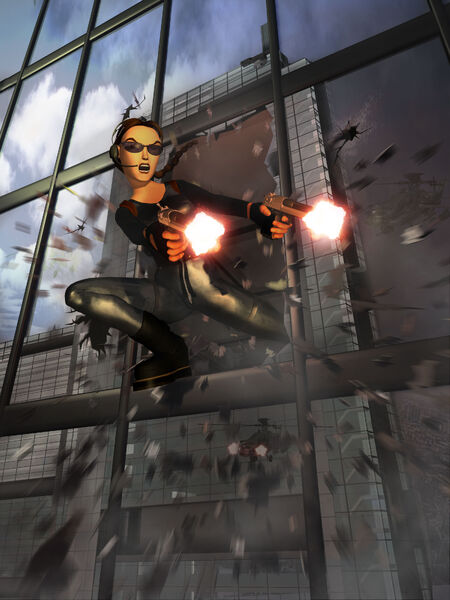As the Tomb Raider Series got more popular in the late 1990s, there came a time a film based on the adventures of Lara Croft was to be produced by director Simon West. Lara Croft: Tomb Raider was released on June 15th 2001. Tomb Raider fans had their prayers answered-but was the film a success? According to RottenTomatoes.Com [1] "Angelina Jolie is perfect for the role of Lara Croft, but even she can't save the movie from a senseless plot and action sequences with no emotional impact." I however fount a better review on the film.

(Official movie poster for Lara Croft: Tomb Raider)
The film shows gives an inside view of Lara Croft's daily life which consists of risking her life to find mysterious artefacts and moving forward with dangerous quests. If the film based on the series wasn't too good to be true for Tomb Raider fans, the surprise behind the fact Academy Award actress Angelina Jolie was to play the role of Lara Croft shocked them all, even myself. "Prior to her casting, Angelina could have easily passed as a real life version of the character based solely on her looks or at least served as possible inspiration for the character’s appearance. Another reason her casting surprised me was because the role was so unlike most of her previous work, which had been predominantly dramatic in nature, not counting “Gone in 60 Seconds”. Even with her relative inexperience in the world of action films, Angelina handled the role rather well. There were just a few moments where she seemed a little uncertain of herself, but generally she stayed true to the character’s confident nature as depicted in the video games". I think it's great that Angelina Jolie stayed true to Lara Croft's character, I personally don't think another actress could have done a better job.

So a success or not? Lara Croft Tomb Raider made a break through, and became one of the only most successful video game adaptions to date. No doubt Eidos were highly impressed with their fortune. Their video game heroine became a shining star.
Box Office Performance:
[3]-"Tomb Raider debuted at number one with $48.2 million, giving Paramount its second-best debut and the fourth-highest debut of 2001. It beat the opening record for a film featuring a female protagonist ($40.1 million for Charlie's Angels), and is the most successful video game adaptation to date, grossing $300,000,000 worldwide."
The Lara Croft Tomb Raider film was a great adaption of the Tomb Raider game. The Tomb Raider franchise became stronger and even more dominant in our culture, especially in gaming culture. Irish rock band "U2" featured clips of the film within their 2001 hit "Elevation", turning Lara Croft into even more of an icon on our television screens and grew to become even more famous than she was before.[2]-http://www.moviefilmreview.com/lara-croft-tomb-raider-2.php
[3]-http://en.wikipedia.org/wiki/Tomb_Raider_%28film%29







